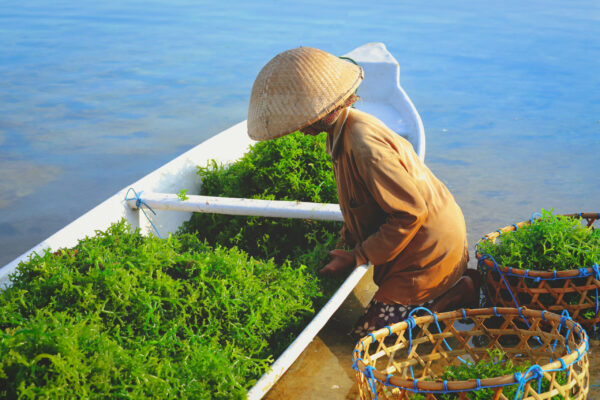A new report by the United Nations Conference on Trade and Development shines a light on the seaweed sector as a driver of food security and women’s empowerment.
Seaweed has multiple uses including for food, nutraceuticals, cosmetics, pharmaceuticals, aquatic animal, or livestock feed, biofertilizer, textiles, and biofuels. It can also be used for producing fully biodegradable and compostable biomass for non-plastics substitute and plastic alternatives.
Seaweed’s growing popularity offers potential to increase economic income, food security, preserve marine biodiversity, and empower women along the value chains. Seaweed farming and processing demonstrate how development, climate, and nature can work together to generate value that uplifts coastal communities.
The report’s authors state that the value of the seaweed sector remains mostly underappreciated and untapped, while it shows clear growth potential beyond its current markets. Within a sustainable ocean economy, seaweed collection, culture, processing, and trade is one of the sectors with the most opportunities to achieve sustainable growth by 2030.
Food security and women’s empowerment
Seaweed farming culture is closely linked to food security, income, livelihoods, and traditional knowledge of rural coastal communities, particularly for women and Indigenous Peoples.
The study aims to contribute to a greater understanding of the seaweed sector as a driver of food security and women’s empowerment while addressing the interlinkages between food security, environmental sustainability, and trade.
A global market
The global market for seaweed has more than tripled in the last two decades, growing from $5 billion in 2000 to $17 billion in 2021, with global exports representing about $1 billion also in 2021. The seaweed industry is dominated by Asia in terms of production, with the United Republic of Tanzania, Chile, and the Russian Federation being the regional champions for Africa, the Americas, and the Eurasian continent, respectively.
In 2021, global seaweed exports were valued at approximately $943 million, while imports were valued at $1.2 billion. However, international trade in seaweed and its by-products only represents 14 per cent of the total market value, indicating that it is still primarily a national production and consumption market.
Top 10 seaweed producers
Food and nutrition
The study analyses the seaweed sector and explores its linkages with food and nutrition security and environmental sustainability. In doing so, it collates the most recent available data and evidence on seaweed production and trade with a focus on developing countries.
The study also calls for promoting and regulating certain forms of sustainable use within marine protected areas to encompass kelp forests and seagrasses while assessing the impact on coastal and marginalized communities. Adoption of relevant sustainability, safety, and social responsibility guidance are considered important steps towards environmental and social inclusion.
You can read the full report, An Ocean of Opportunities: The Potential of Seaweed to Advance Food, Environmental and Gender Dimensions of the SDGs, along with further information here.
